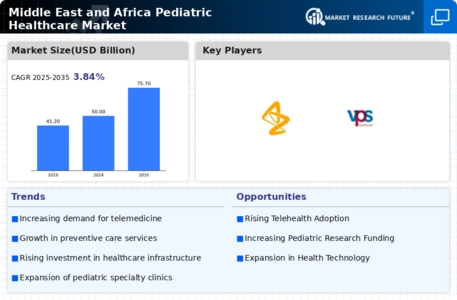Market Share
Pediatric Healthcare Market Share Analysis
In the dynamic scenario of Pediatric Healthcare Market, various market share placement approaches are adopted by organizations to obtain a competitive advantage and become a big name. One of those strategies is differentiation, where firms focus on creating unique products or offer peculiar services being different from others in the marketplace. For example, they can specialize in pediatric treatments, engage in developing revolutionary technology or provide healthcare tailored to children and their families’ needs. These special elements are highlighted to create customer loyalty and increase market share.
Another important strategy is cost leadership which aims at being a low-cost provider of pediatric health care. An efficient operation system, streamlined processes, and strategic partnerships are key aspects of this approach that help reduce costs borne by the whole health care process without affecting its quality. The companies using price leadership as their primary strategy seek for larger space on the affordable health care solutions market where there are price sensitive consumers who want value without compromising the quality of services offered in pediatrics.
The other major strategy is market segmentation used in Pediatric Healthcare Market. This involves focusing on specific demographic characteristics, locations or psychographic profiles when deciding what product and service to offer each segment (Ferrell et al., 2012). Some examples include niche areas such as neonatal care, paediatric surgery or specialized therapies among others targeting certain age groups or medical conditions. Such targeted approaches allow organizations to position themselves as experts within these segments so that they attract customers who require specialized treatment for their medical conditions thus improving their market share in those particular niches.
Another aspect used by firms working within the scope of pediatric healthcare deals with collaboration and strategic alliances as a way of positioning oneself into the market share (Greenberg et al., 2013). Some possible collaborations could be with pharmaceutical companies, manufacturers of medical devices or research institutions (Kotler et al., 2015). By forming these types of relationships it will be possible to develop new drug regimens give patients access to the most modern medical technologies and provide additional healthcare products. When dealing with reputable partners, major players in the industry are able to upgrade their rankings thus expanding market share.
Also, focusing on customer experience and satisfaction is of great significance in market share positioning. Pediatric healthcare providers that prioritize a positive and supportive experience for children and their families can build a strong reputation and brand loyalty. This entails creating an environment that is child-friendly, hiring compassionate staff, and putting in place efficient systems that make it easier even for patients’ family members. Consequently, health service providers will not only maintain existing clients but also gain new ones thereby leading to an increased market share.
In addition to that concentration on client experience as well as delighting plays a significant part in market portion placement (Kotler et al., 2015). These are pediatric health care professionals who concentrate more on having a good time for kids as well as their loved ones hence enhance their name in the market. More significantly, they should have child appealing surroundings, caring individuals among employees plus efficient processes lowering strains of both patient’s relatives and those seeking attention from them.Parents always look forward to quality treatments; therefore any hospital must strive hard to meet this expectation so as not to lose its clientele base while meeting these expectations-healthcare providers can even increase volume because satisfied patients or parents may go out of their way to recommend these services or doctors they trust (Ferrell et al., 2012).

















Leave a Comment